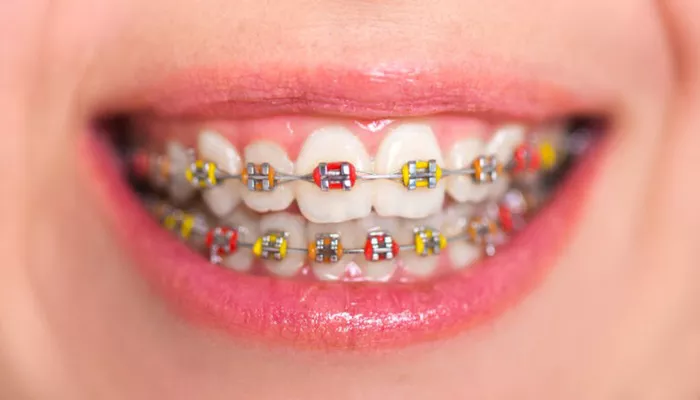Orthodontics is a branch of dentistry that specializes in diagnosing, preventing, and treating dental and facial irregularities. It aims to improve the alignment and function of teeth and jaws, ensuring a healthier and more aesthetically pleasing smile. One common treatment option in orthodontics is braces, which apply controlled forces to teeth and jaws to gradually correct malocclusions, or irregularities in alignment. But how does one know if braces are necessary? This guide will provide a detailed, subtitled, and easy-to-understand explanation of the signs and symptoms that may indicate a need for orthodontic treatment.
Understanding Malocclusions
Malocclusions are irregularities in the alignment of teeth and jaws. They can range from mild to severe and may affect the appearance, function, and overall health of the teeth and jaws. Some common types of malocclusions include:
Overcrowding: When there is insufficient space in the dental arch for all the teeth to align properly, resulting in crowded or crooked teeth.
Spacing Issues: When there is too much space between teeth, leading to gaps or diastemas.
Overbite: When the upper front teeth extend too far over the lower front teeth.
Underbite: When the lower front teeth extend too far forward or the upper teeth are too far back.
Crossbite: When some upper teeth bite inside the lower teeth, or some lower teeth bite outside the upper teeth.
Open bite: When there is a space between the upper and lower front teeth when the mouth is closed.
These malocclusions can cause discomfort, affect chewing and speech, and even lead to more serious issues such as tooth decay, gum disease, and jaw joint problems if left untreated.
Signs And Symptoms of Needing Braces
There are several signs and symptoms that may indicate a need for braces. While some may be obvious, others may be more subtle and require a professional evaluation. Here are some of the most common indicators:
Crooked or Crowded Teeth: As mentioned earlier, overcrowding is a common malocclusion that can cause teeth to be crooked or misaligned. This can make it difficult to clean teeth properly, leading to an increased risk of tooth decay and gum disease. Crooked teeth can also affect the overall appearance of the smile, affecting self-esteem and confidence.
Spacing Issues: Gaps between teeth can be caused by a variety of factors, including missing teeth, small teeth, or an overly large dental arch. While some spacing is normal and can be cosmetically treated with veneers or bonding, excessive spacing can affect chewing efficiency and increase the risk of gum disease.
Overbite or Underbite: These malocclusions can cause discomfort and affect chewing, speech, and breathing. An overbite can also lead to wear and tear on the lower teeth, while an underbite can cause the lower teeth to bite into the gum tissue of the upper teeth, causing damage.
Crossbite: A crossbite can cause uneven wear on teeth, tooth decay, gum disease, and jaw joint problems. It can also affect chewing and speech, as well as the overall appearance of the smile.
Open Bite: An open bite can cause difficulty chewing and speaking, as well as an unnatural appearance of the smile. It can also lead to jaw joint problems and breathing issues.
Jaw Discomfort or Pain: Jaw pain or discomfort can be a sign of a malocclusion, particularly if it occurs when chewing, opening or closing the mouth, or speaking. This discomfort can be caused by misalignment of the teeth or jaws, leading to strain and stress on the jaw joints.
Difficulty Chewing: If you find it difficult to chew food properly or if you experience discomfort or pain when chewing, it may be a sign of a malocclusion. Misaligned teeth can make it difficult to bite and chew food, affecting nutrition and overall oral health.
Speech Impediments: Malocclusions can also affect speech, causing lisps, slurs, or other speech impediments. This can affect communication and self-esteem, particularly in children and adolescents.
Abnormal Wear on Teeth: Uneven wear on teeth can be a sign of a malocclusion, particularly if it occurs on the chewing surfaces of the teeth. This wear can be caused by misaligned teeth rubbing against each other, leading to damage and wear.
Shifting or Loose Teeth: If you notice that your teeth are shifting or becoming loose, it may be a sign of a malocclusion. Misaligned teeth can cause stress and strain on the supporting bone and tissues, leading to tooth movement and instability.
Professional Evaluation
While these signs and symptoms may indicate a need for braces, it is important to consult with a qualified orthodontist for a professional evaluation. An orthodontist is a dentist who specializes in the diagnosis, prevention, and treatment of malocclusions. They have advanced training and expertise in orthodontic treatment options, including braces.
During a professional evaluation, the orthodontist will perform a comprehensive examination of the teeth, jaws, and facial structures. This may include taking x-rays, photographs, and impressions of the teeth to create a detailed model of the dental arch. The orthodontist will also ask about any symptoms or concerns you may have, as well as your medical and dental history.
Based on the examination and evaluation, the orthodontist will determine if braces are necessary and recommend the most appropriate treatment plan. Treatment options may vary depending on the severity and type of malocclusion, as well as individual factors such as age, dental health, and personal preferences.
Conclusion
In conclusion, determining if you need braces involves a comprehensive evaluation of your teeth, jaws, and facial structures by a qualified orthodontist. While there are several signs and symptoms that may indicate a need for braces, such as crooked or crowded teeth, spacing issues, overbite or underbite, crossbite, open bite, jaw discomfort, difficulty chewing, speech impediments, abnormal wear on teeth, and shifting or loose teeth, it is important to consult with a professional for a thorough examination and evaluation. With proper diagnosis and treatment, orthodontic treatment can improve the alignment and function of teeth and jaws, leading to a healthier and more aesthetically pleasing smile.
Related topics:

